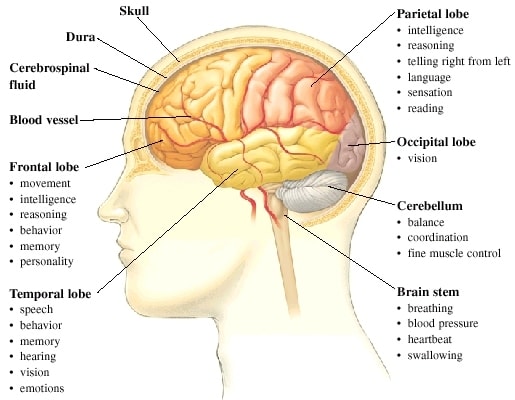 This February former Chicago Bears safety David Duerson shot himself in the chest. The 50-year-old played in four Pro Bowls and also won a championship with the New York Giants in 1990. When he was found at his home in Sunny Isles Beach, Fla., there was a note left behind which said:
This February former Chicago Bears safety David Duerson shot himself in the chest. The 50-year-old played in four Pro Bowls and also won a championship with the New York Giants in 1990. When he was found at his home in Sunny Isles Beach, Fla., there was a note left behind which said:
"Please, see that my brain is given to the NFL's brain bank."Duerson's wish was granted and test results released yesterday showed evidence of "moderately advanced" chronic traumatic encephalopathy (CTE). According to Dr. Ann McKee, a neuropathologist and co-director of the : "Dave Duerson had classic pathology of CTE and no evidence of any other disease. He had severe involvement of areas that control judgment, inhibition, impulse control, mood and memory."
Chronic traumatic encephalopathy is a form of neurodegenerative damage which is believed to be caused by repeated concussions. Originally described in boxers, and called dementia pugilistica (DP) (commonly called “punch drunk”), symptoms include memory impairment, speech and gait problems, Parkinsonism, tremors and lack of coordination. Early on there may be emotional instability, erratic behavior, depression and problems with impulse control. Eventually it leads to full-blown dementia. Floyd Patterson, Sugar Ray Leonard, and Muhammad Ali are all suspected to be victims of DP. In 2002, Dr. Bennet Omalu, a forensic pathologist and neuropathologist in Allegheny County, Pa., examined the brains of four professional football players who had histories of repeated concussions. Microscopic findings where identical to those found in DP, and he renamed the condition chronic traumatic encephalopathy.
 The disease is characterized by the build-up of a toxic protein called tau in the form of neurofibrillary tangles (NFTs) throughout the brain (brown areas in the picture at left). These tangled clumps of protein are abnormal and found within the nerve cells in the brain. They were first described by Dr. Alois Alzheimer in one of his patients suffering from dementia. These tangles interfere with the normal functioning of the brain and eventually kill brain cells. Although the dementia of CTE is similar to that seen in patients with Alzheimer's Disease, they are different conditions.
The distribution of the damage is widespread, including the cerebral cortex (which includes the frontal and temporal lobes), the thalamus, hypothalamus, brain stem and spinal cord.
The disease is characterized by the build-up of a toxic protein called tau in the form of neurofibrillary tangles (NFTs) throughout the brain (brown areas in the picture at left). These tangled clumps of protein are abnormal and found within the nerve cells in the brain. They were first described by Dr. Alois Alzheimer in one of his patients suffering from dementia. These tangles interfere with the normal functioning of the brain and eventually kill brain cells. Although the dementia of CTE is similar to that seen in patients with Alzheimer's Disease, they are different conditions.
The distribution of the damage is widespread, including the cerebral cortex (which includes the frontal and temporal lobes), the thalamus, hypothalamus, brain stem and spinal cord.

Unfortunately, CTE can only be diagnosed at autopsy using special tests that are not routinely performed.
Boston University, at its Center for the Study of Traumatic Encephalopathy (CSTC), has thus far studied the brains of 14 former NFL players, and has found CTE in 13 of those players. They have even found evidence of CTE in younger football players, the youngest being 18 years old. Dr. Omalu also tested the brain of WWF wrestler Chris Benoit. In 2007, Benoit had killed his wife and son before hanging himself. Dr. Omalu’s studies showed CTE in all areas of Benoit’s brain.
Here is a video of the press conference at CSTC where the results of Duerson's tests were revealed:
